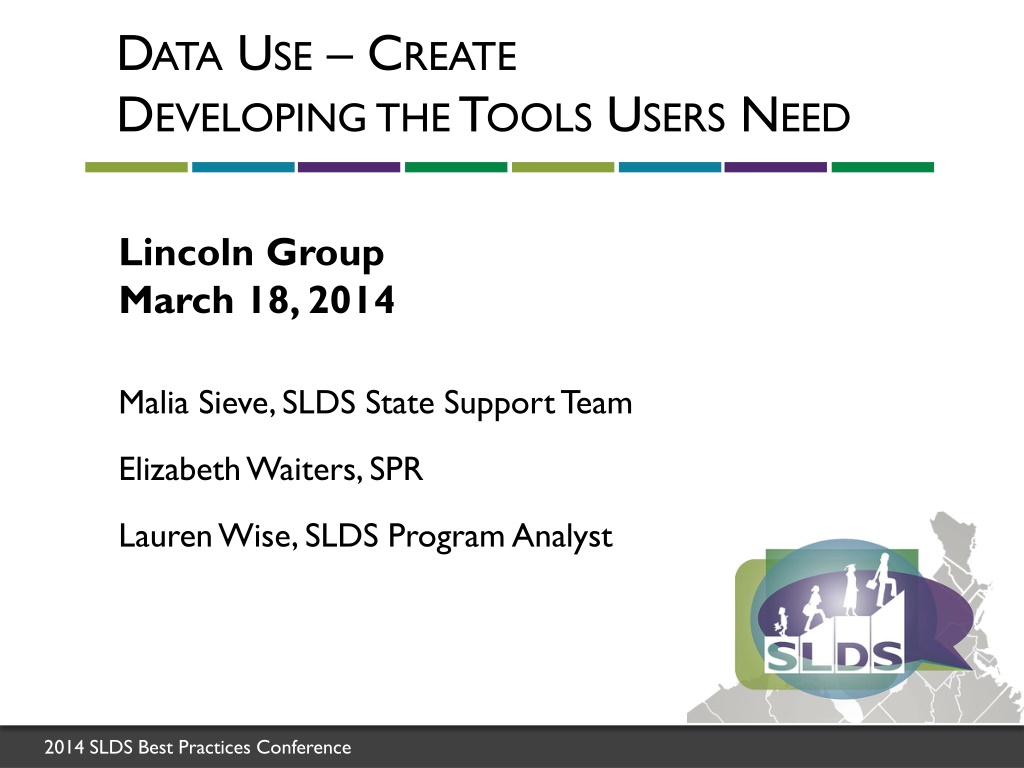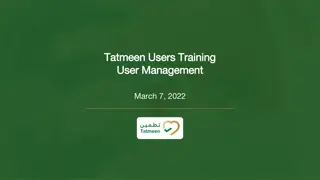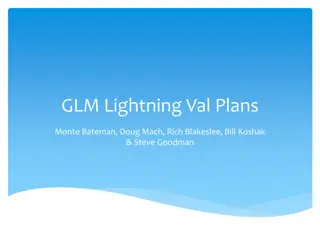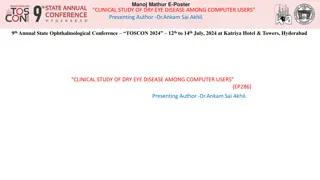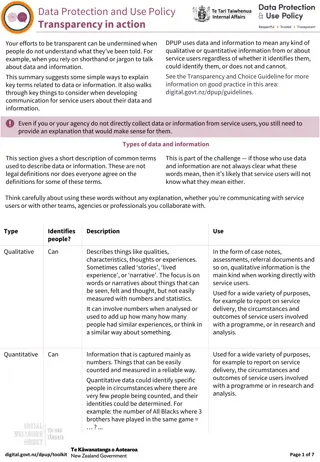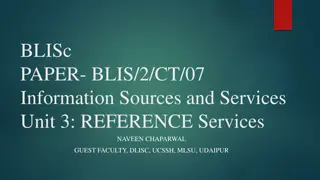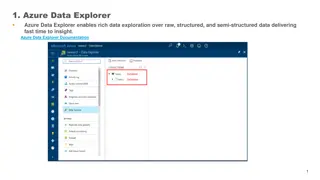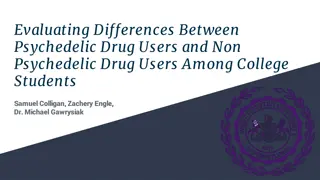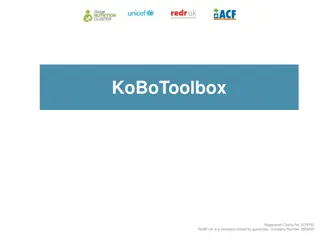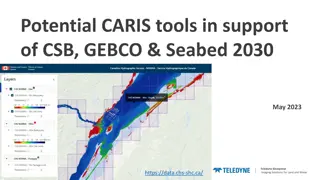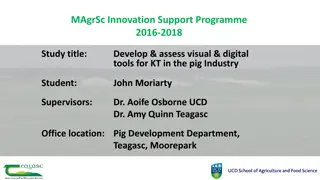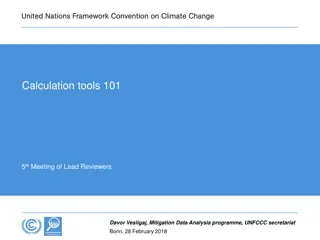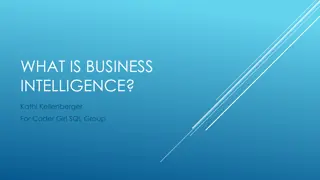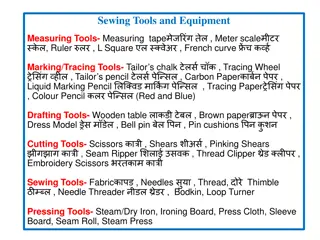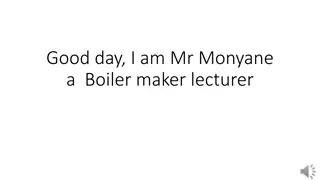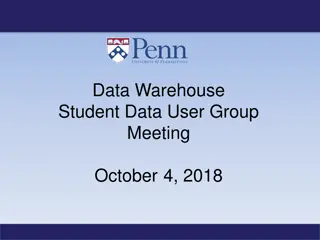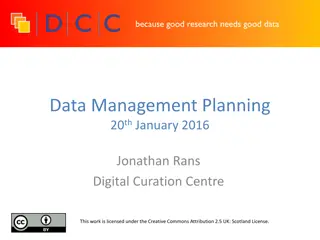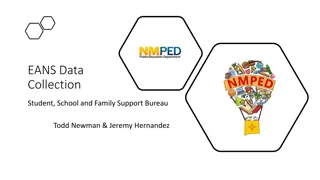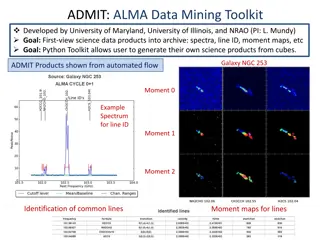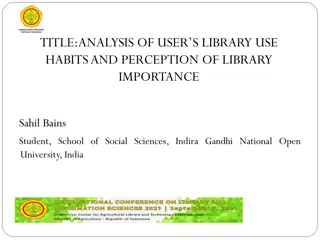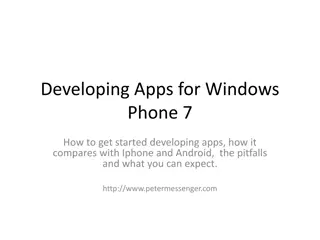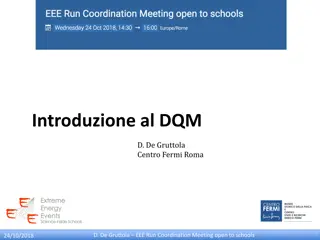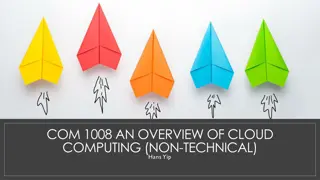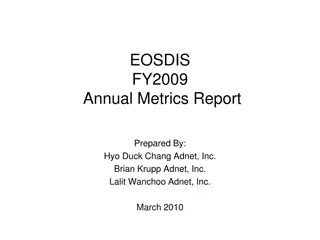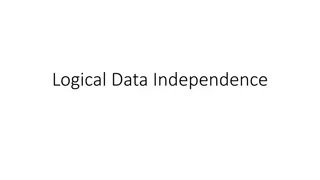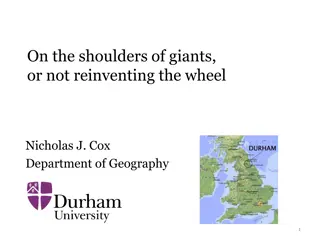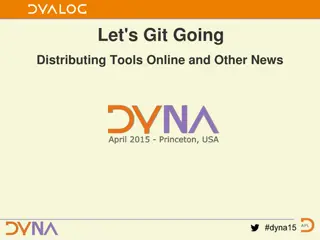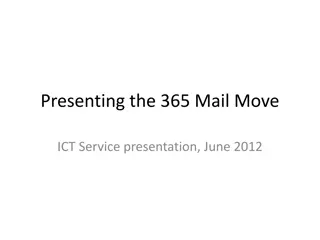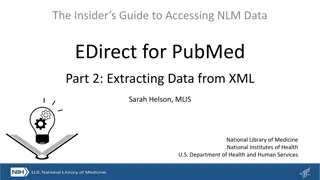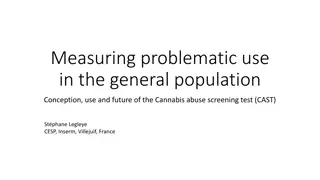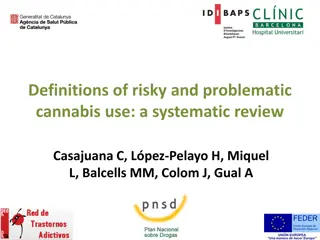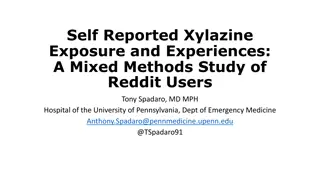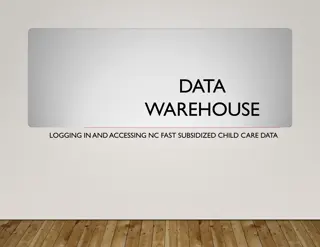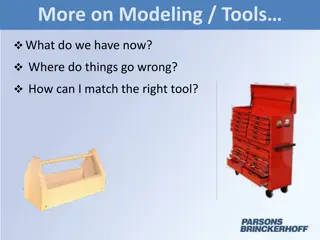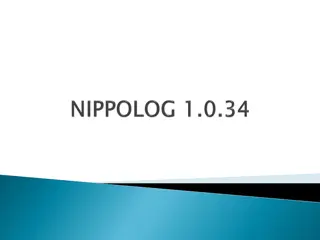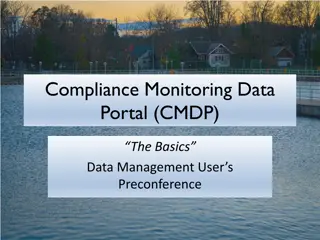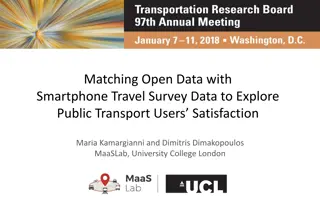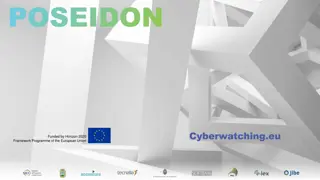Developing the Tools Users Need: Strategies for Effective Data Use
Explore key insights and strategies presented at the 2014 SLDS Best Practices Conference focusing on developing data use tools to meet stakeholder needs. Topics covered include stakeholder engagement, product inventories, challenges, and technical assistance resources for states seeking to enhance data resources effectively.
Download Presentation

Please find below an Image/Link to download the presentation.
The content on the website is provided AS IS for your information and personal use only. It may not be sold, licensed, or shared on other websites without obtaining consent from the author. Download presentation by click this link. If you encounter any issues during the download, it is possible that the publisher has removed the file from their server.
E N D
Presentation Transcript
DATA USE CREATE DEVELOPINGTHETOOLS USERS NEED Lincoln Group March 18, 2014 Malia Sieve, SLDS State Support Team Elizabeth Waiters, SPR Lauren Wise, SLDS Program Analyst 2014 SLDS Best Practices Conference
AGENDA Introductions Data Use Framework Overview Activity: Stakeholder and Product Inventory States Panel of Effective Engagement, Products, and Delivery Activity: Addressing Challenges Wrap-up State Team Reflection 2014 SLDS Best Practices Conference 2
INTRODUCTIONS 2014 SLDS Best Practices Conference 3
OVERVIEWOF RELATIONSHIPS 2013 MIS 4
WORKSHOP GOALS To understand the role of the stakeholder and their needs in the development of data use tools To inventory and reflect upon the efforts taken to engage stakeholders and the data tools developed To identify areas where additional technical assistance/resources can be provided to help states move forward more effectively and efficiently in the development of data resources 2014 SLDS Best Practices Conference 5
DATA USE FRAMEWORK 2014 SLDS Best Practices Conference 6
WHY DATA USE? Data Use is one of three focus areas of the SLDS grant program and related technical assistance The ultimate measure of success is the widespread, effective use of the data to inform decisions and change behaviors large images 2014 SLDS Best Practices Conference 7
DATA USE FRAMEWORK Data Use Framework contains a generalizable approach to help ensure effective, widespread data use from planning through sustainability Additional resources (full framework, publication overview, self assessment tool, etc.) available in Public Domain Clearinghouse on GRADS website, nces.grads360.org large images 2014 SLDS Best Practices Conference 8
DATA USE FRAMEWORK PLAN CREATE SUPPORT 2014 SLDS Best Practices Conference 9
DATA USE FRAMEWORK: PLAN Mission and Goals What is the point? PLAN CREATE Identification and prioritization of users Who are we serving? SUPPORT Identification of uses What types of decisions and/or actions will the system inform? 2014 SLDS Best Practices Conference 10
DATA USE FRAMEWORK: CREATE Stakeholder engagement How do we involve those whom we intend to serve? PLAN CREATE SUPPORT 2014 SLDS Best Practices Conference 11
DATA USE STRATEGY: CREATE Stakeholder engagement: How do we involve those whom we intend to serve? Establishing goals for engagement Setting expectations up front: what is being asked, what will be provided o Communications versus input Leveraging existing groups The importance of follow-up and feedback 2014 SLDS Best Practices Conference 12
DATA USE FRAMEWORK: CREATE Stakeholder engagement How do we involve those whom we intend to serve? PLAN CREATE Products/Resources What types of products/resources will the data system generate? SUPPORT 2014 SLDS Best Practices Conference 13
DATA USE STRATEGY: CREATE Products/Resources: What are we creating? Selecting tools appropriate for users o User population size o Technology skill level Degree of user-driven inquiry/interaction Creating sum greater than the parts the power of an aligned set of resources anchored to a core set of critical questions 2014 SLDS Best Practices Conference 14
DATA USE FRAMEWORK: CREATE Stakeholder engagement How do we involve those whom we intend to serve? Products/Resources What types of products/ resources will the SLDS generate? Delivery How will you deliver data to key users? PLAN CREATE SUPPORT 2014 SLDS Best Practices Conference 15
DATA USE STRATEGY: CREATE Delivery: How do we get it to users? Understanding users current work context The value of well planned rollouts o Communication plan o Timing based on users calendar Identifying hooks that prompt usage after initial rollout 2014 SLDS Best Practices Conference 16
DATA USE FRAMEWORK: SUPPORT User support How will users know how to use the system? PLAN CREATE How will users understand the data provided by the system? SUPPORT How will users know what to do with the data provided by the system? 2014 SLDS Best Practices Conference 17
DATA USE FRAMEWORK: SUPPORT(CONTINUED) Evolution and Sustainability How do we continue to support users and their needs as they expand and evolve? How do we make the system an essential resource for users? How do we ensure we have the resources to continue meeting users needs? PLAN CREATE SUPPORT 2014 SLDS Best Practices Conference 18
DATA USE FRAMEWORK Identification of Uses Stakeholder Engagement Identification & Prioritization of Users Products/Resources PLAN CREATE Mission & Goals Delivery large images SUPPORT Evolution & Sustainability User Support 2014 SLDS Best Practices Conference 19
STATE TEAM ACTIVITY: STAKEHOLDER & PRODUCT INVENTORY 2014 SLDS Best Practices Conference 20
STAKEHOLDER & PRODUCT INVENTORY Using the template provided, respond to the following: Who are the priority stakeholders of your data system effort(s)? How have these stakeholders been engaged? What is the data product (e.g., static reports, data dashboard, data access portal) that has been/will be developed to meet the stakeholders needs? How will the product be delivered? (through what vehicle? on what schedule?) 2014 SLDS Best Practices Conference 21
EFFECTIVE PRACTICESINTHE STATES Local Level Oregon Educators or program providers State Level Rhode Island Agency executive leadership, legislators, governor s office, executive staff Research Community Virginia & Washington 2014 SLDS Best Practices Conference 22
OREGON 2014 SLDS Best Practices Conference 23
OREGON SLDS STAKEHOLDER ENGAGEMENT: CLASS SIZE James Harrington Formerly Retired CIO Michael Rebar, Ph.D. Director of Enterprise Systems
Evolution of T-S Data Link 2004-09: No Teacher-Student data link prior to ALDER No course data collected 2010-12: ALDER IUID: Instructional Unit ID collection Class Roster collection 12-13: Link with Staff Assignment collection
Stakeholder Engagement IUID and Class Roster workgroups: Data Collection Committee Kickoff meeting with Oregon Education Association, Oregon School Boards Association, and Confederation of Oregon School Administrators State Board process to adopt Administrative Rule
Contact jim.harrington@state.or.us michael.rebar@state.or.us https://sites.google.com/site/hb2644 classsizeproject/home/reference- materials
RHODE ISLAND 2014 SLDS Best Practices Conference 29
How is the Audience targeted, engaged and informed? Engage them from the beginning Intentionally cross- pollinate your teams Use varied communication methods (on-line chat areas, facilitation, standing meetings)
How is the tool made public? How is it used? Tailor the format to the audience Ensure tool can speak to multiple contexts Provide Next Steps that are actionable ridatahub.org/math-success
VIRGINIA 2014 SLDS Best Practices Conference 33
Data Products that Meet Stakeholder Needs Virginia Longitudinal Data System (VLDS) SLDS Best Practices Conference March 18, 2014
What is VLDS ? http://www.youtube.com/watch?v=lonZnZfm7cs&fe ature=player_embedded Federated" system developed to Merge data across participating state agencies Protect Privacy -complex double-deidentifying hashing process Leave private data behind the existing firewalls of the participating agencies Went Live in August 2013
How was it Designed? Data Governance Committee - State agencies (DOE, SCHEV, VEC, VITA, VCCS) Defined requirements, business rules, processes Each agency decided what data to make available- this continues to grow State Agency and Research Community participation in multiple User Acceptance Tests
How is it being used? More agencies are being added more data is being made available by existing agencies Researchers must work with and projects must be approved by the participating state agencies Research should be directed toward burning questions as identified by the participating state agencies Serves as a framework for other states VLDS videos and a VLDS eNewsletter have been developed to inform interested parties about the nature and of VLDS. These are available at http://vlds.virginia.gov/
WASHINGTON HTTP://WWW.OFM.WA.GOV/HIED/DASHBOARD/INDEX.HTML 2014 SLDS Best Practices Conference 38
ACTIVITY: ADDRESSING CHALLENGES 2014 SLDS Best Practices Conference 39
ADDRESSING CHALLENGES Within your teams: Select a challenge area Develop plan for how your team will address this challenge when you return to your state Are there additional resources/technical assistance needs from the State Support Team? 2014 SLDS Best Practices Conference 40
WRAP UP 2014 SLDS Best Practices Conference 41
STATE TEAM REFLECTION Reflection Tool provided in packets Record any thoughts, insights, examples, etc. that you want to remember to bring into your State Action Planning sessions on Wednesday and Thursday 2014 SLDS Best Practices Conference 42
CONTACTS Contact information: Malia Sieve, malia.sieve@sst-slds.org Elizabeth Waiters, Elizabeth_Waiters@spra.com Lauren Wise, lauren.wise@ed.gov 2014 SLDS Best Practices Conference 43
